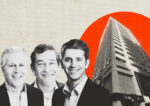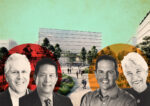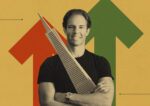Paul Stein knows the exact moment he became interested in buying 350 California Street.
Three years into the emptying-out of Downtown San Francisco due to the pandemic, he was feeling “despondent” about the state of the city as he walked through the city’s North Financial District. Then he saw the lower floors of the 22-story tower lit up “like a jewel box.”
As one of the founders and managing partner of SKS Partners, Stein once owned 888 Brannan Street and remembered that his tenant there, Airbnb, often used the lobby for hackathons and other “back of the napkin” brainstorming. The glass-walled lobby and mezzanine at 350 Cal seemed like a perfect place for the same kind of in-person-only creative work, he said.
The lobby renovations were completed shortly before the pandemic by the building’s previous owner, Mitsubishi UFJ Financial Group. It also had many “really appropriate” tenant improvements, which made it all the more enticing.
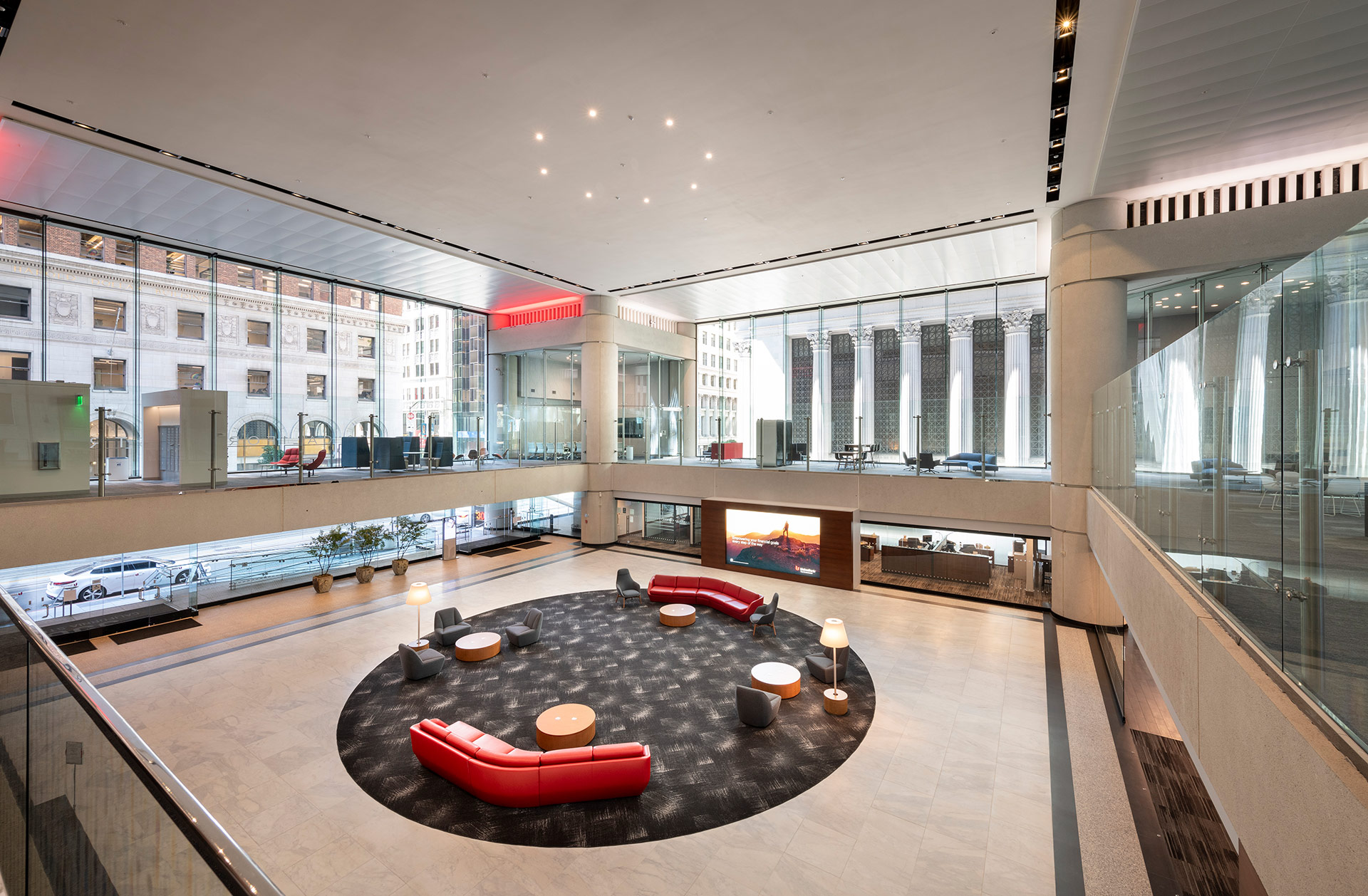
“The building was immaculate,” Stein said.
Mitsubishi had put the 300,000-square-foot tower on the market for $250 million in 2020. The firm moved the bulk of its employees at Union Bank out of the building and eventually sold off the bank entirely to U.S. Bancorp.
SKS, in partnership with Swig, bought the building for $61 million, or $205 per square foot, in one of the few Downtown SF commercial trades of 2023. The price was such a discount Stein called it “kind of insane.”
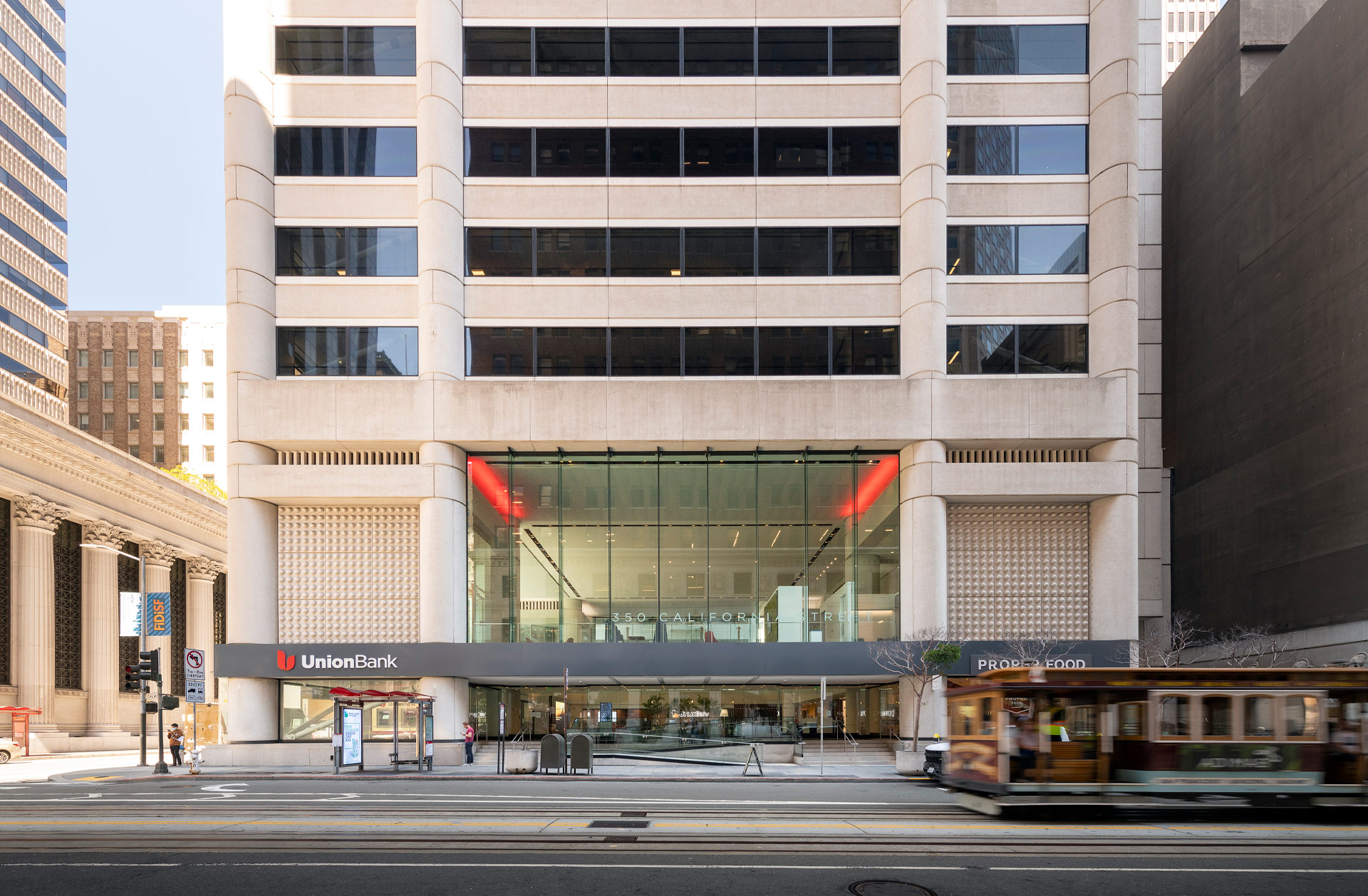
“One year into COVID, they walked away from a much bigger number,” he said.
In his interview with TRD, Stein discusses the future plans for filling the building — which he bought three-quarters empty — and why now is “an unbelievable opportunity to buy if you have the courage of your convictions.”
Why were you able to buy 350 Cal at such a low price point — about $200 per square foot?
Institutions are pretty shell-shocked. There are not a lot of reasons to buy something right now because if it doesn’t work, you might get fired.
When I went to ULI [Urban Land Institute] in Toronto last year, everybody was talking about 350 Cal, and I was like, why? Well, half the people said, “Are you nuts? You’re buying an office building in San Francisco.” And the other half said, “We need a price point. We need something to tier off of.”
Does 350 Cal mark the bottom of the market? And will that price point give others the confidence to move forward?
Look, there’s the old saying about everyone standing around a really cold lake saying, “Who’s going to jump first?” It was going to be us or somebody else. I’d rather it be us.
But there are definitely more people playing now, no question, because it’s safer to do.
It’s not just the price. Our background gave people comfort. We kind of led the way on South of Market; we were the first ones to do lab and the first ones to do PDR. So I think our reputation was being somewhat prescient.
And the effect?
It was great for our firm. It put us in the headlines, big time. I was wondering whether we were relevant anymore. We didn’t engage in a lot of what was going on of late because these prices were ridiculously high, but these run-ups don’t go on forever.
You can only guess at timing because the economy is a dark science, but I know two things to be undeniably true: real estate is cyclical so be careful how you structure your deals; and when things have sold over replacement cost every single time there has been a recession.
I’ve been in this market for so long, it was easier for me to see the patterns. People were starting to come out of their hidey-holes. It’s not a natural state to be at home all the time. If you just look at the data, there’s a lot of reasons why you wouldn’t do it. But I was feeling like I was having a hard time seeing how it wouldn’t work.
Any lessons from this deal?
When you look at a piece of real estate the first thing you should do is ask, why does it matter? Does it have a reason to be?
350 Cal was in the right place, and the right type of building with all the features you want without having to put a lot of money into it. And the basis was the important thing to be able to go to the market and offer a really nice product at a dramatically lower rent — 50 percent below market in some cases.
There’s gonna be a lot of resets. The market really bifurcated into the trophies — with fantastic views and all-time high rents, but smaller tenancy, — and everything else.
People tend to look at buildings, and it’s guilty before proven innocent. But there’s nothing wrong with this building. If somebody just needs killer views, we don’t have that, but we do have great views. Somebody might want to be closer to Salesforce Tower. That’s fine. I think out of the 5 million square feet of tenants in the market I can get a couple of hundred-thousand feet.
It’s a real value proposition. I think that’s what the market really was looking for, and it’s working.
How have you attracted tenants to the building? You’ve announced two full-floor leases signed so far.
When there’s a change in ownership, that always creates interest. Sometimes you should fire the owner, but instead you fire the broker because you have to create change. It’s like a restaurant trying a new name or a new menu.
Plus, because we’ve been in this market so long, we are known as fast. We are broker-friendly. We’re very honest. We do build nice buildings.
So the thesis was, people know what to expect from us, we don’t waste people’s time and we’ll be able to respond to things quickly at a low basis.
Also, there are lots of leases expiring soon and people who are going to stay in the city are staying, which is more than you might think. San Francisco’s troubles are overstated.
Swig is a longer-term holder, and our previous structure was a shorter-term hold. I really want to do longer, and that’s what Swig has done. It felt like it was a really good mix and they were kind enough to partner with us. We’ve been here 30 years and they’ve been here even longer. I know them and I like them.
What happened with your initial partner on the building?
Well, a lot of things happened. We had the money. There were rumors early on that we had lost our partner. We hadn’t. We had choices.
We did have a hiccup towards the end, but I ran into Jim Carbone, their recently retired CEO [at Swig] who I like and I’ve known forever. Now we have Connor Kidd, who is a good choice. They were there for us and they saw the opportunity.
Are you looking to buy any more buildings in San Francisco?
We’re looking for other things to buy for sure, but it’s not solely focused in San Francisco.
Plus we have our big development with NASA and UC-Berkeley at Moffett Field [in Santa Clara County].
For us to buy another building in the city, it would have to have all the same qualities as 350 Cal, not the least of which is tenant improvements, because that’s where you get killed.
Real estate is a pretty basic, cyclical industry. There are moments of irrational euphoria, which was the dot-com thing where none of it made sense. I had people showing up with shorts and sunglasses who never managed anything. When a tenant is pitching me, that’s unnatural. Zero vacancy is not healthy, it never is.
Then, in 2008, that was a systemic issue, as is this downturn. But the difference this time is how return-to-office is going to shake out. I think hybrid is here to stay. At SKS, we have a two-day in-office policy right now and we’re constantly revisiting it
My preference is three days but I’m not putting my preferences on everybody else.
What’s your take on San Francisco’s long-term prospects?
To be in this market, you have to believe that San Francisco is a viable place. What you don’t hear about are some of the very important large financial institutions that have been renewing, albeit at smaller sizes. This is too important a place not to be here.
If nothing else, it’s always going to be innovative. It’s AI now, what’s next? That’s what the city is good at. It’s a young person’s place.
Occasionally, it’s not fun, but this is when you have to really know what you’re doing. You shouldn’t mistake good timing for being good. Cycles have been the biggest challenges. I think we were a little too early on South of Market. Pioneers get the arrows, settlers get the gold. You learn over time what to be wary of.
We like to stick to our knitting — the things we know how to do — and so we want to be careful about what we buy. But there’s obviously going to be huge opportunities.
Are you considering retirement?
I couldn’t retire. One of my favorite sayings is, “I married you for life, but not for lunch.”
Read more
